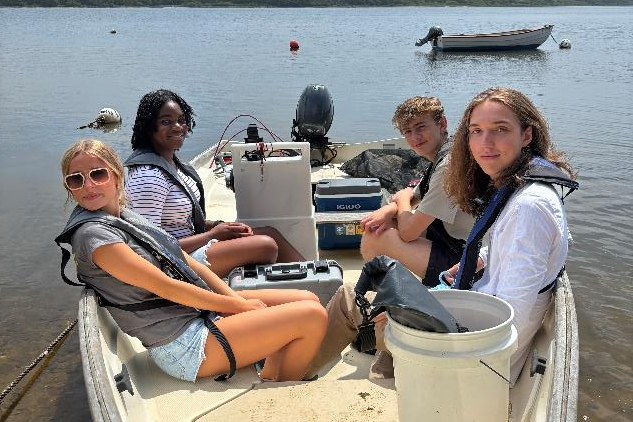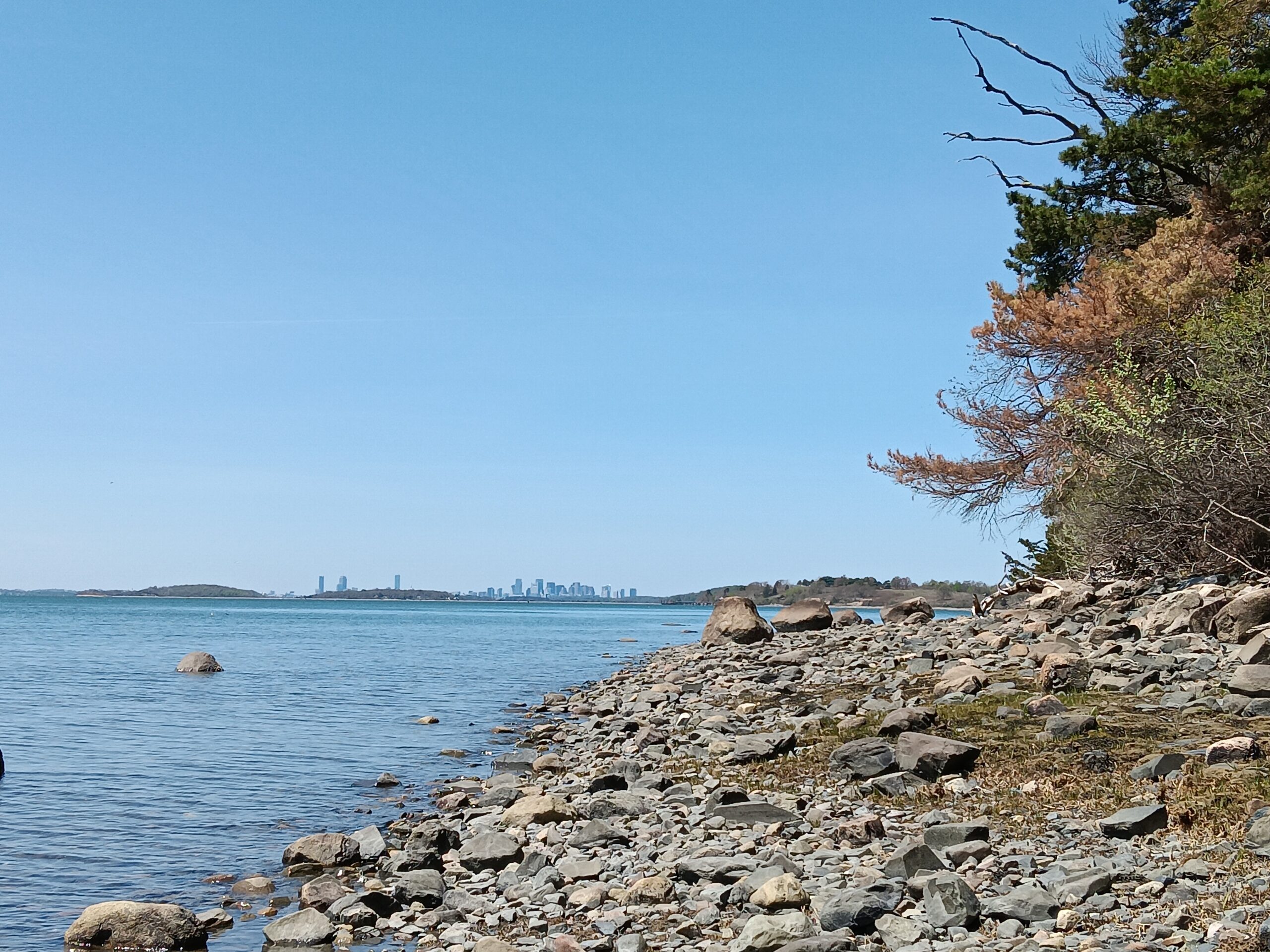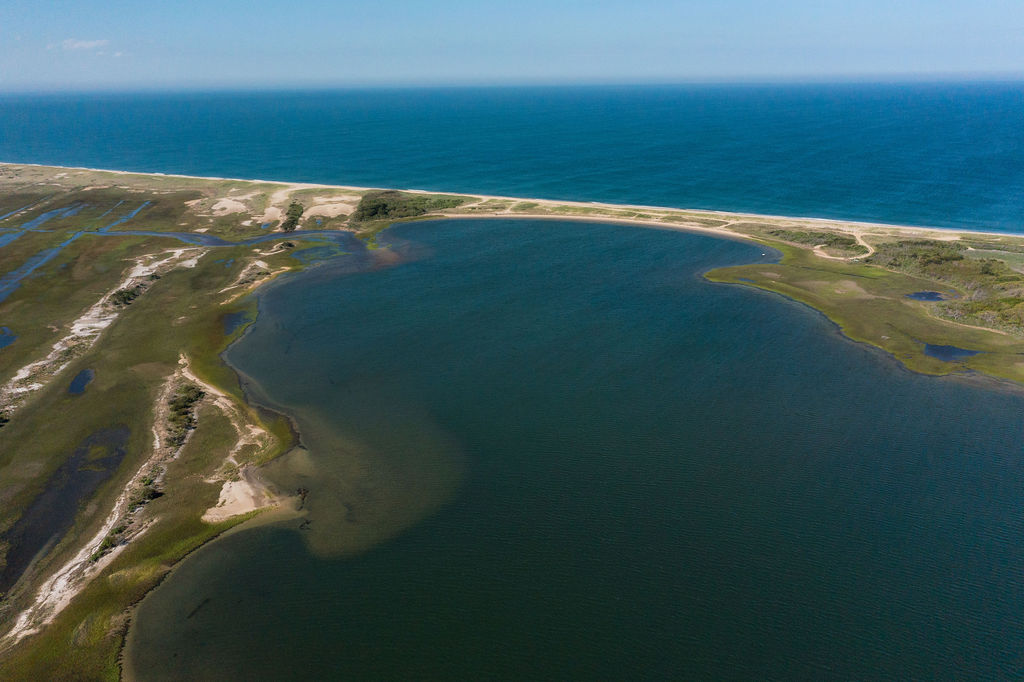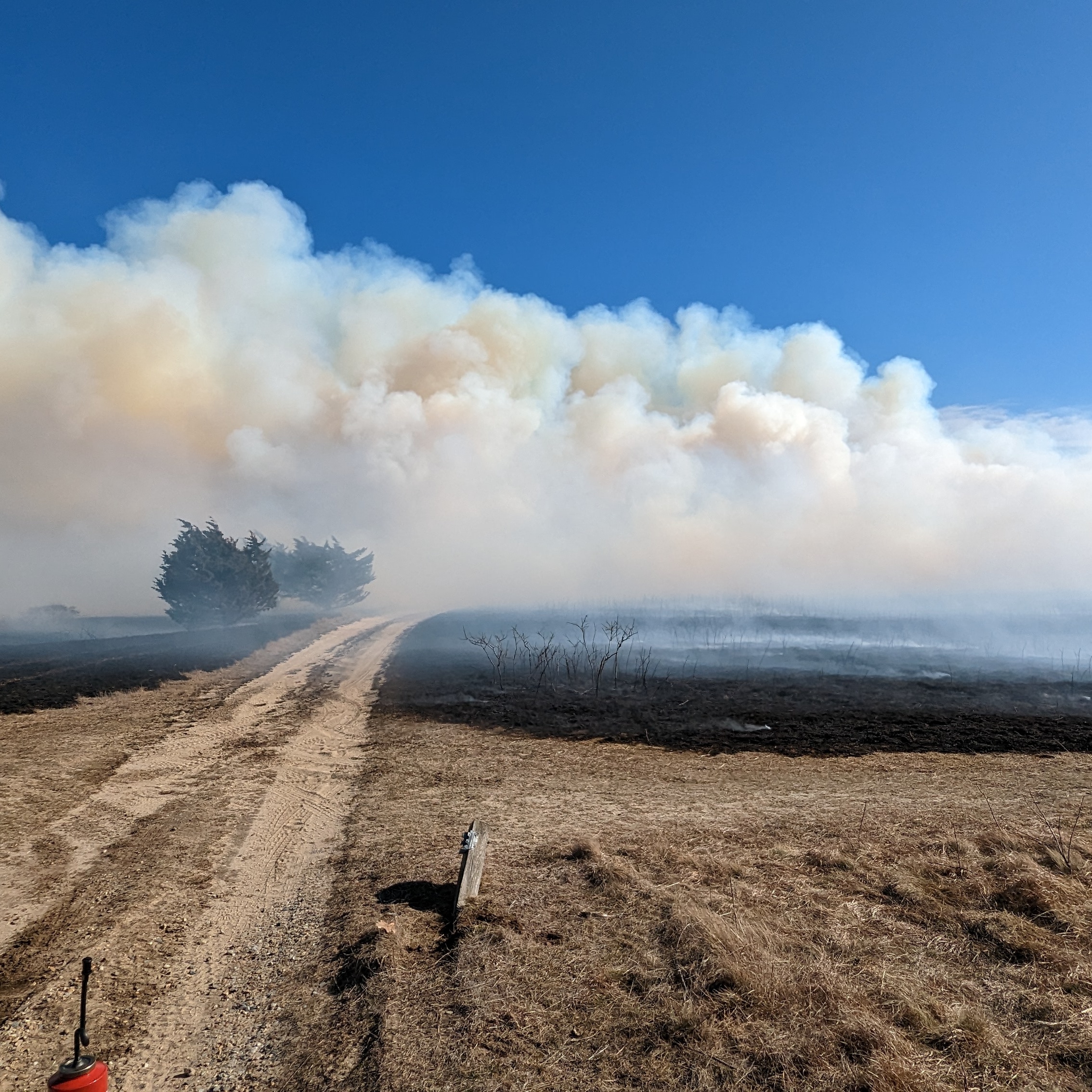
This spring, The Trustees and The Nature Conservancy (TNC) have partnered to perform six controlled burns across Martha’s Vineyard. These burns will encourage globally rare sandplain habitats important for biodiversity, reduce fuel loads, and support the partnerships and capacity to reduce the threat of wildfire across Martha’s Vineyard. The burns are funded by the Massachusetts Wildlife Habitat Management Grant Program, and The Trustees and The Nature Conservancy are supported in these efforts by the Massachusetts Department of Conservation and Recreation as well as both the Edgartown and West Tisbury Fire Departments.
The burns began on Sunday, March 19, at Long Point Wildlife Refuge and were completed at Wasque on Tuesday, March 21. After close evaluation of weather and wind conditions, professional fire crews, trained and experienced in controlling and maintaining these prescribed burns, arrived on the Island on Saturday. To ensure safety and success, initiation of the burn requires the correct combination of wind speed, wind direction, relative humidity, and the amount of precipitation that has occurred. The team awoke on Sunday to prime conditions and the burn boss announced at 7:30am the burn was to begin at 9am.
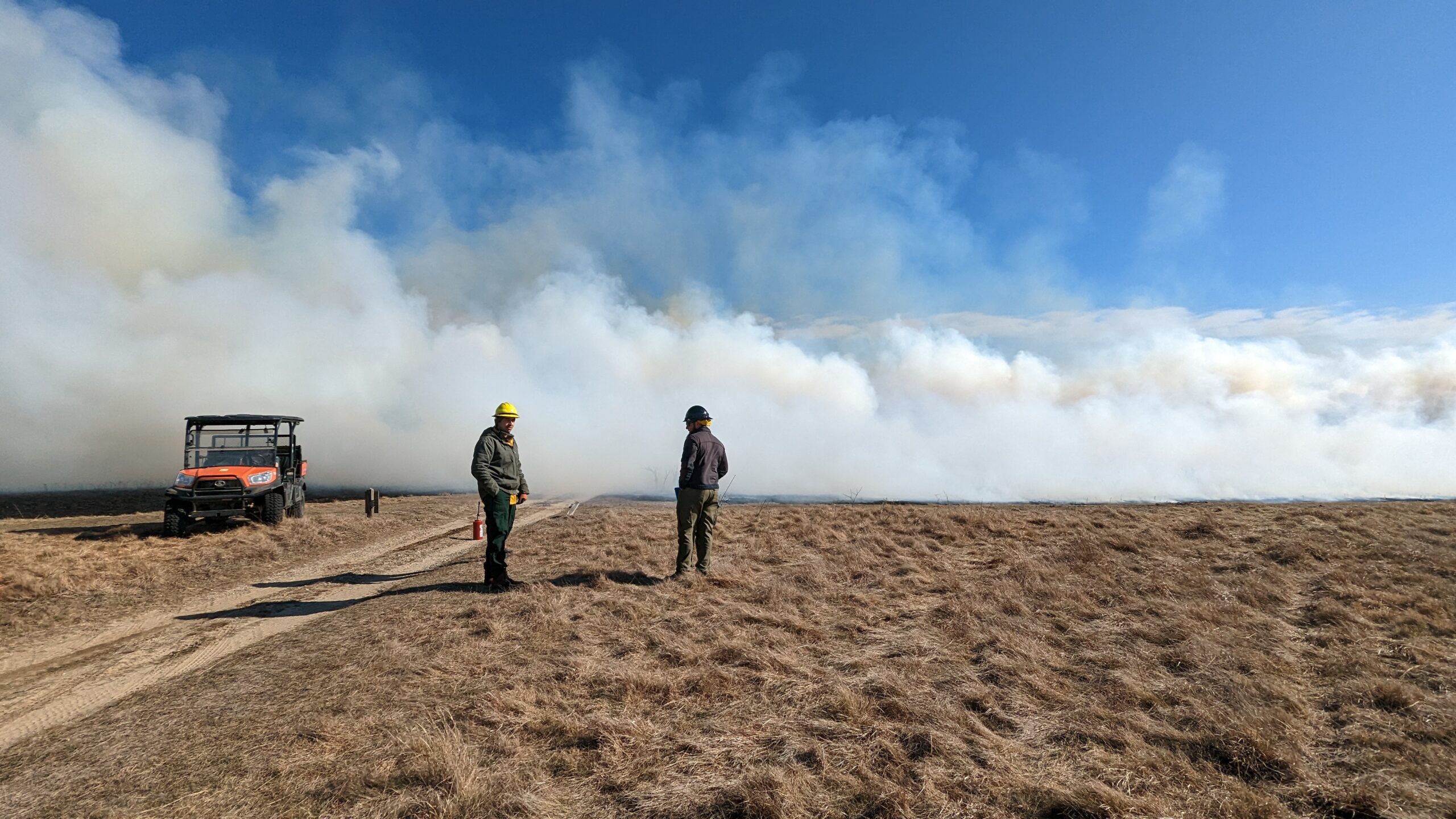
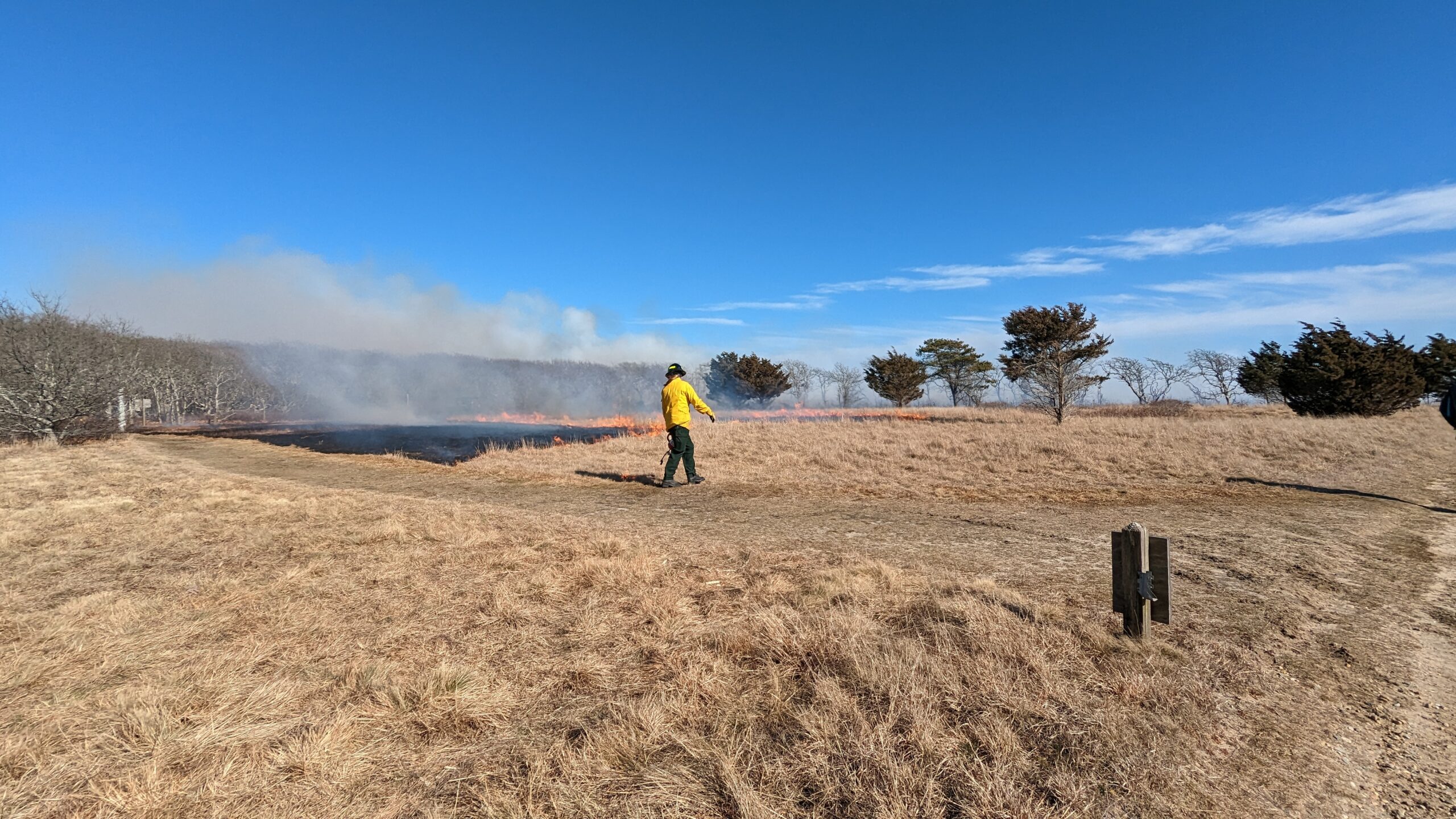
Safety in addition to ecology is The Trustees top concern. Island stewards and staff prepared the sites in advance of the arrival of the crews, creating and maintaining 10-20 foot wide cleared paths known as fire breaks on the properties. Primary and secondary breaks will continue to be maintained annually. Fire departments with water trucks and brush breakers were on site creating water lines at the fire breaks and monitoring conditions overall. The Trustees stewards and ecologist, training for their prescribed burn license, continually traveled around the properties watching spot fires and precipitously extinguishing them with the burn team and fire departments. Under the direct supervision of the burn team, Trustees staff were even able to start some of the burns.
Oliver, one of the Island stewards, described his experience. “We learned so much about fire exercises, in the field, versus what we could learn by reading a book,” he said. “We got to experience things like staying in the black, where fire has already passed through, and noticing spot burns that popped up. There was a lot of adrenaline. And now, we have our licenses, which means we are licensed to work burns anywhere in the United States.”
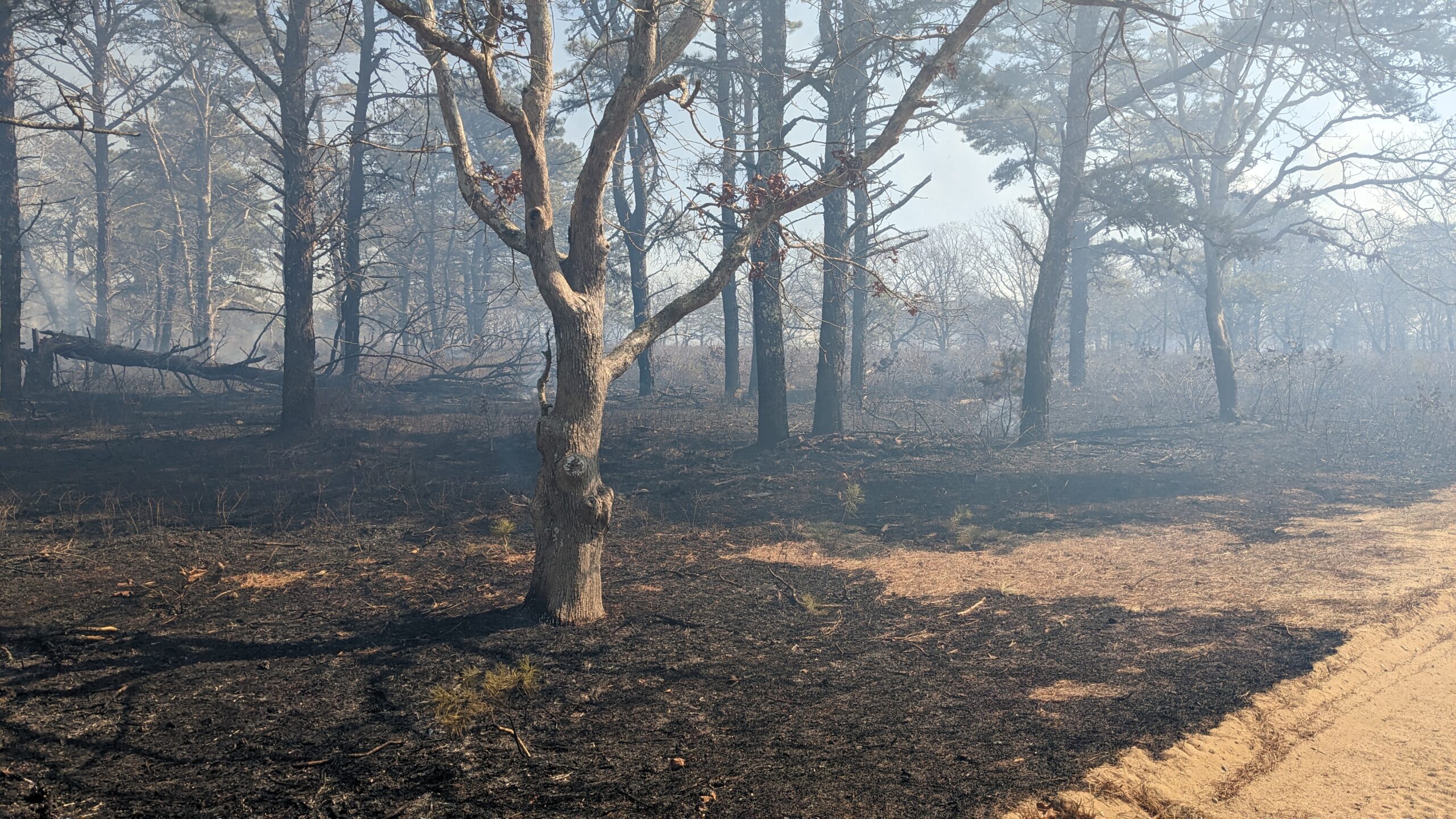
Both Long Point Wildlife Refuge and Wasque are home to globally rare and imperiled sandplain grasslands and woodlands habitat, collectively called “barrens.” Controlled burns are one of the best ways to manage this ecosystem, where many fire-adapted species live.
“These habitats have been shaped by fire,” said Russ Hopping, Lead Coastal Ecologist. “A lot of the plants that grow there have evolved with fire, and their leaves and bark are full of volatile oils that accelerate or make the fire burn hotter. Essentially what this does is it eliminates their competition, other species that are not fire-adapted.”
“Statewide, we have more than 40 state-listed species that depend on these habitats.” Russ shared. “So, they’re very important for maintaining the state’s biodiversity. One because they’re uncommon or rare on the landscape, and two is the actual ecology that supports a disproportionate number of rare species. If you’re a plant geek, a butterfly geek, or bird geek, you go to these properties to see a suite of species you just don’t see anywhere else.”
The fire also removes the duff layer, grasses and other plants that build up year after year The growth of these other plants and annual mowing can create a sort of mulch that prevents the fire-adapted species from germinating, with seeds unable to reach the soil. The duff also retains moisture and aids in the survival of non-fire-adapted species.
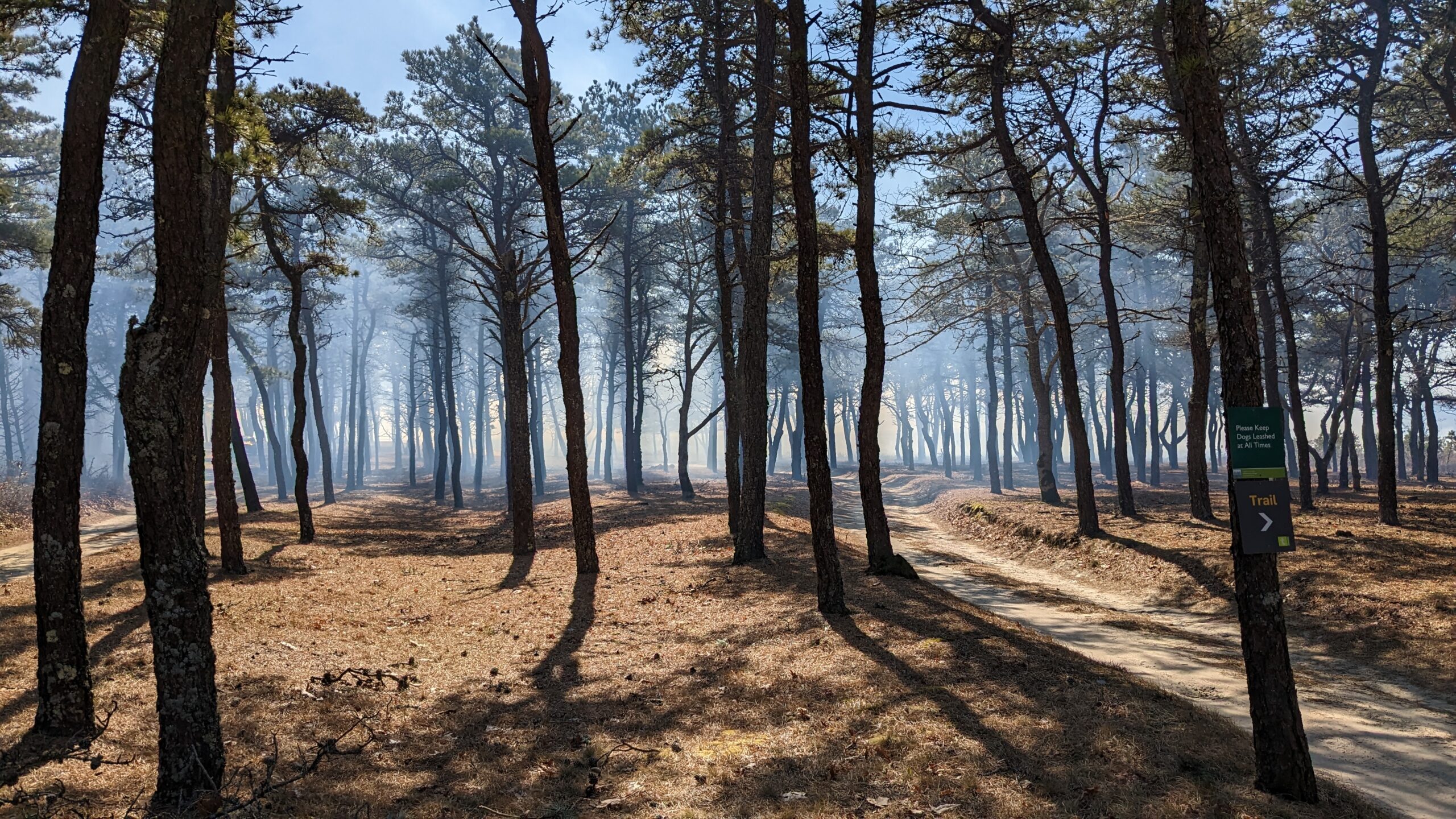
The fires are also critical in reducing fuel loads, lowering the risk of wildfires on the Island. Without regular burning or mowing, vegetation keeps growing and increases fuels that can carry fire across the landscape or result in hotter fires that are harder to control. Partnerships with state agencies including Massachusetts Department of Conservation and Recreation and the Massachusetts Department of Fisheries and Wildlife as well as both the Edgartown, Chilmark, and West Tisbury Fire Departments allow for critical support, key training opportunities and familiarity with properties likely to burn within this controlled setting. The combination of reducing fuel loads and increased capacity contribute to the overall reduction of wildfire risk.
The way that organizations involved in these burns are coming together serves to address findings of the Comprehensive Wildfire Protection Plan (CWPP) and helps to establish fundamental and strong partnerships across the Island that support maintenance of this globally rare habitat and reduce risk of wildfire for Island communities.
Overall, over 130 acres of forest, shrubland and grassland were burned and are ready for renewal and regrowth this spring. Join us this summer for guided tours to learn more!
